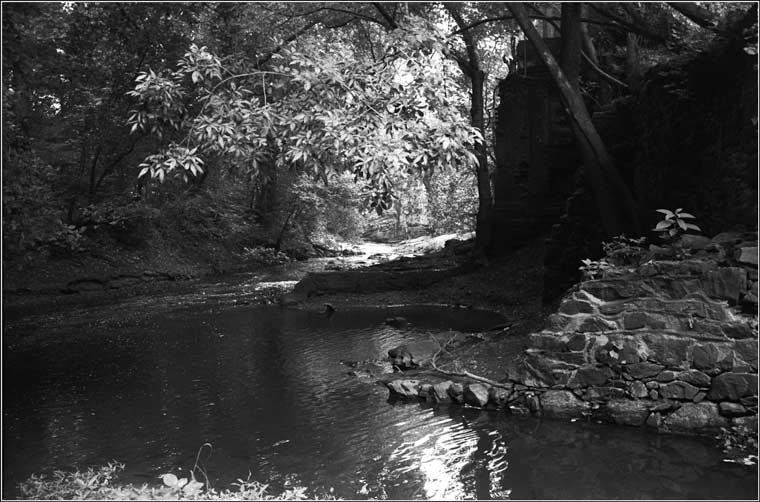the rise of the railroads was not an unmixed blessing

water from the Rivanna was impounded by the dam, shunted into the mill race, routed beneath the mill driving an underwater turbine which mechanically powered all mill machinery. The water was discharged into Moore's creek, pictured above.
During the decade of the 1850's, the national economy was in a period of expansion unequaled in its history. The countryside rang with the sounds of hammers driving down new railroad tracks; commerce, foreign and domestic, multiplied; and dents were made in the nation's natural resources. The panic of 1857 disrupted prosperity but only temporarily. Yet in the woolen industry the decade was one of relative backwardness. Wool production increased only from 70,000,000 to 86,000,000 pounds annually, in spite of a population growth of thirty-five percent. The number of mills in production declined in the face of unfavorable conditions. Those being a reduction in tariff duties on woolen imports in 1846 and inability to match foreign developments in wool-making machinery. For the multitude of small mills about the country, the rise of the railroads was not an unmixed blessing for they broadened the stream of goods coming either from the large eastern mills or from importations; this, in turn, served to frustrate and complicate the attempts of local establishments to expand.--Harry PoindexterLabels: Moore's Creek, Poindexter History

1 Comments:
Does anyone have any other photographs of this wonderful ruin. On the other side it has small arched openings. It is a masonry wall that is under the Allied storage van parking, facing Moore's Creek. I am dying to know what that masonry structure once was. Please let me know.
Post a Comment
<< Home